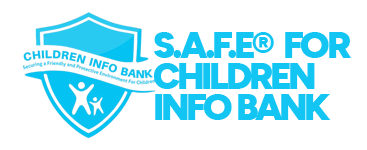Breaking the Cycle: Protecting Children from Drug Abuse on the International Day Against Drug Abuse and Illicit Trafficking

The International Day Against Drug Abuse and Illicit Trafficking, observed every year on June 26, is a global initiative led by the United Nations to raise awareness about the devastating impact of drug abuse and the illegal drug trade on individuals, families, and communities.
This observance calls for collective action from governments, organizations, and citizens to prevent substance use, support those affected by addiction, and strengthen international cooperation in combating drug trafficking.
It underscores the urgent need for evidence-based policies, education, and rehabilitation programs to address the health, social, and economic consequences of drug abuse and build a safer, healthier world for children and youth.
Theme of International Day Against Drug Abuse and Illicit Trafficking 2025
With the theme “Break the cycle. #StopOrganizedCrime,” the 2025 observance emphasizes the importance of consistent and focused efforts to dismantle the ongoing cycle of drug trafficking and organized crime through sustained, coordinated action. It urges communities, especially young people, to take a stand against the networks that exploit and endanger lives.
History of International Day Against Drug Abuse and Illicit Trafficking
On June 26, 1987, the International Conference on Drug Abuse and Illicit Trafficking adopted two foundational documents: the Comprehensive Multidisciplinary Outline of Future Activities in Drug Abuse Control and the Declaration of the International Conference on Drug Abuse and Illicit Trafficking. June 26 was chosen to commemorate the dismantling of the Guangdong opium trade in 1839.
Later that year, the UN General Assembly adopted resolution 42/112, officially designating June 26 as the International Day Against Drug Abuse and Illicit Trafficking. The first observance took place in 1989, symbolizing the global commitment to a drug-free world.
Drug Use: WHO Statistics Globally
According to the World Health Organization:
- 292 million people (5.6% of those aged 15–64) used illegal drugs at least once in 2022.
- 64 million people live with drug use disorders.
- In 2021, 296 million used psychoactive substances, with opioid overdoses causing about 600,000 deaths annually.
- 14.8 million people inject drugs, facing high rates of hepatitis C (38.8%) and HIV (15.2%).
- Drug abuse can drain up to 2% of a nation’s GDP by burdening healthcare, legal, and social systems.
According to statistics, American children between the ages of 12 and 17 years have used Marijuana (10.1%), Cocaine (0.3%), Opioids (1.6%), Prescription Pain Medication (1.6%), Prescription Stimulants (1.2%), (LSD 0.9%), Prescription Sedatives (0.1%), Methamphetamines (0.1%), and Heroin.
These numbers reflect the scale of the issue and the need to educate and protect children and youth from becoming part of these statistics.
Significance of the Day
The International Day Against Drug Abuse and Illicit Trafficking serves as a platform for raising global awareness about the complex and far-reaching consequences of drug abuse and illegal drug trade.
This observance underscores the urgent need for action by governments, NGOs, schools, and communities, all of whom play a critical role in organizing programs that highlight the dangers of drug use, promote access to treatment and rehabilitation, and strengthen both local and international efforts to combat the illicit drug market.
Drug abuse does more than harm individuals; it disrupts families, fuels organized crime, and threatens the safety and stability of entire communities.
Children and teenagers are particularly vulnerable, often targeted by traffickers or influenced by peer pressure, making early prevention efforts essential. Through education, open communication, and supportive environments, we can build resilience in children, thereby steering them away from substance use.
Protecting future generations is a shared responsibility. Today calls on all of us to teach children about the risks of drug use, encourage healthy, informed decision-making, and support evidence-based programs that empower youth and foster drug-free communities.
Global Drug Control Efforts
Efforts to combat drug abuse date back to the 1909 International Conference on Narcotic Drugs in Shanghai. Since then, three major UN conventions have shaped international drug policy:
- Single Convention on Narcotic Drugs (1961)
- Convention on Psychotropic Substances (1971)
- UN Convention Against Illicit Traffic in Narcotic Drugs and Psychotropic Substances (1988)
These treaties aim to regulate the production, distribution, and use of narcotics and psychotropic substances while ensuring access for medical and scientific needs.
UN Institutional Action
- Commission on Narcotic Drugs (CND): Established in 1946 under ECOSOC to oversee the implementation of international drug control treaties.
- United Nations Office on Drugs and Crime (UNODC):
Leads global initiatives, including this observance, and promotes health-based, human-centered drug policies. - Political Declarations:
- 2009: UN member states adopted a Political Declaration and Plan of Action.
- 2019: A Ministerial Declaration reaffirmed efforts for a drug-free world through balanced and evidence-driven strategies.
How to Get Involved
Anyone can contribute to the mission of a drug-free world. Here’s how:
a. Raise Awareness
Use social media, school programs, or community forums to share accurate information on drug abuse. Emphasize prevention, treatment, and the importance of international collaboration.
b. Support Drug Abuse Programs
Volunteer or donate to organizations that provide support, treatment, and rehabilitation for people with substance use disorders, including youth-focused services.
c. Advocate for Effective Policies
Support laws that address the root causes of drug abuse and promote harm reduction, treatment access, and youth prevention programs.
d. Take Part in Educational Campaigns
Schools, youth clubs, and community centers can host sessions that educate children and teens about drug risks and the importance of informed decision-making.
e. Organize or Join Events
Engage in seminars, webinars, rallies, or art competitions that spread the message of prevention and recovery. Involving young people in these events makes the message more relatable and lasting.
Steps Parents Can Take to Prevent Drug Abuse in Their Children
- Parents should maintain open, age-appropriate conversations with their children about drugs, making it a regular part of growing up.
- Sharing real-life experiences can help illustrate the dangers of substance use.
- Discussing long-term consequences, including health, legal, and social impacts, can make the risks more relatable.
- Staying involved in your child’s friendships and encouraging participation in positive group activities helps build a strong support network.
- Prioritize drug education at home and in school, equipping children with the knowledge and confidence to make healthy, informed choices.
How parents can play their role in curtailing child abuse
A parent is a child’s first role model. They should model good behaviour by avoiding drugs. They should create a safe, loving, and supportive home environment. It is their role to educate their children about personal boundaries and the importance of speaking up when they feel uncomfortable.
By modeling respectful and non-violent behavior, parents teach children how to treat others and expect to be treated. Open communication and trust help children feel secure. They should also be alert to warning signs and seek help if they suspect drug abuse.
Role of the School in Eradicating Drug Abuse Among Children
A child’s formative years take place within the school system. Schools play an essential role in curbing drug abuse by educating, guiding, and supporting students during these formative years.
By organising drug education programs, schools can teach students about the risks and consequences of substance abuse.
Teachers can identify behavioral changes in the students at an early stage and make referrals to appropriate services. Schools also create a safe and disciplined environment that discourages drug-related activities and encourages peer support for positive behavior.
Role of the community in curbing drug abuse among children
The community is vital to curbing drug abuse in society. They do these in several ways:
- They organise community-based programs for children and youth, thereby creating awareness of the issue.
- They provide a supportive environment for children.
- They engage children in mentorship programs that encourage positive activities and educate them about the dangers of substance use.
- Collaborate with parents and educators to ensure early identification of at-risk children and timely intervention.
- By promoting a drug-free culture, offering safe recreational spaces, and supporting families, communities can reduce the chances of drug abuse among young people.
Conclusion
By raising awareness, promoting rehabilitation, strengthening global partnerships, and supporting youth and families, we can work together toward a world free from drug abuse. As we observe this day, let us commit to meaningful actions that prioritize health and create safe, supportive environments for our children.
A drug-free future begins with education and collective determination to protect lives and empower the next generation.





